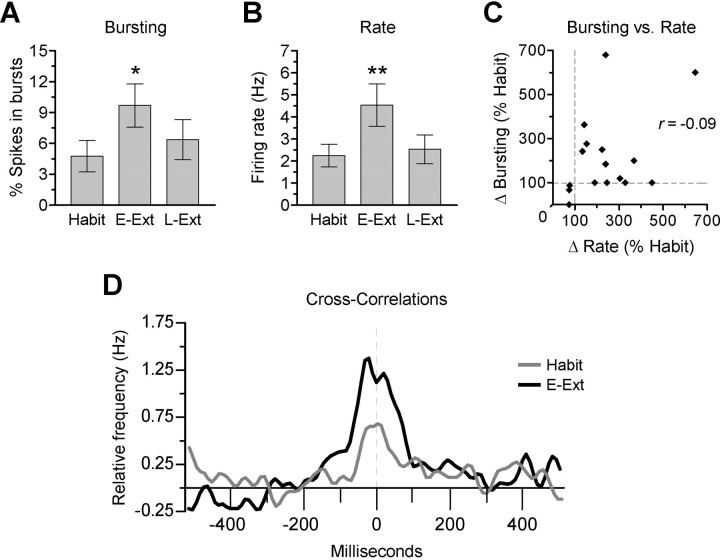Figure 5.
Conditioning increased bursting and synchrony in prelimbic neurons. A, B, Average bursting and rate during tone periods of neurons that were tone-responsive during early extinction (n = 19). Bursting was significantly higher during early extinction than during habituation (*p = 0.03) and tended to reduce with extinction training (p = 0.19, early ext vs late ext). B, These training-induced changes in bursting are similar to those observed in firing rate (**p's < 0.01, early ext vs habit and late ext). C, Relationship between rate and bursting during early extinction. Each dot represents a single neuron, and values are expressed as changes from habituation levels. The lack of correlation (r = −0.09) suggests that changes in bursting occurred independently of changes in firing rate. D, Cross-correlations between simultaneously recorded cell pairs during tone periods. Histograms show the average of 36 of 147 (24%) correlograms showing significant peaks during early extinction (see Materials and Methods for statistical analysis). The peak of the group correlogram was significantly higher during early extinction than during habituation (paired t test, p = 0.011). (Correlograms were smoothed using Gaussian filter, with filter width of 3 10 ms bins; y-axis represents relative firing frequency after subtracting shift-predictor values.)

